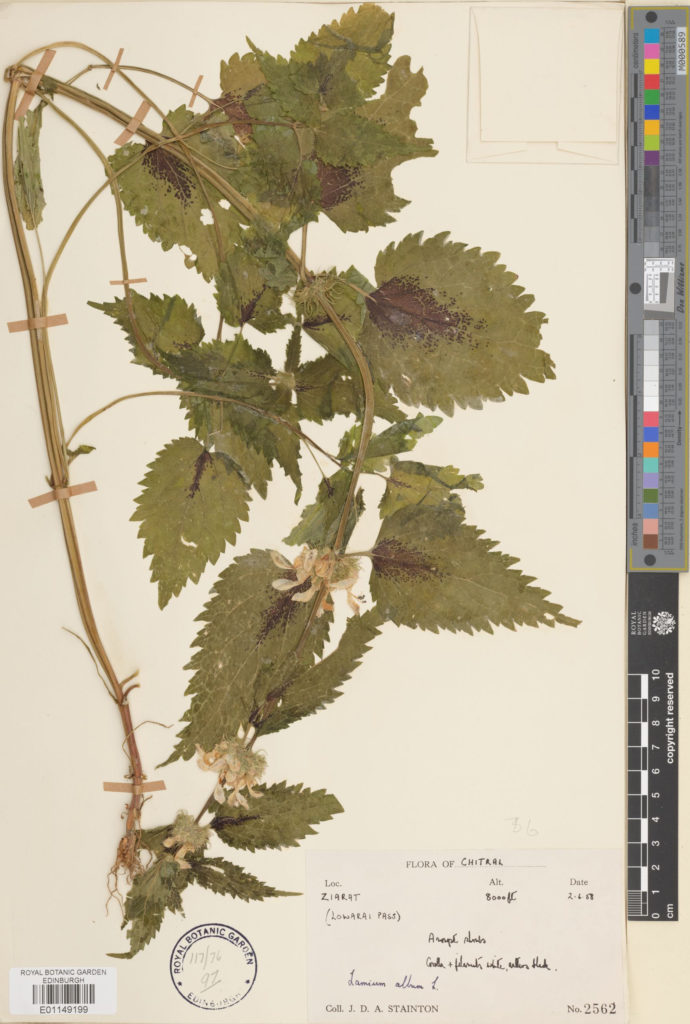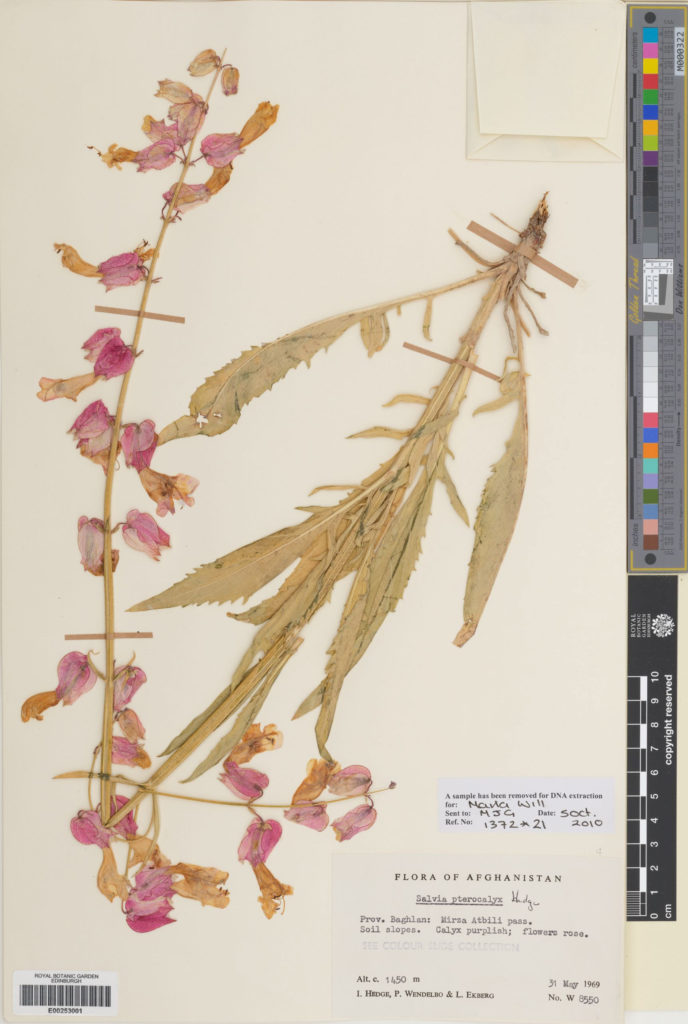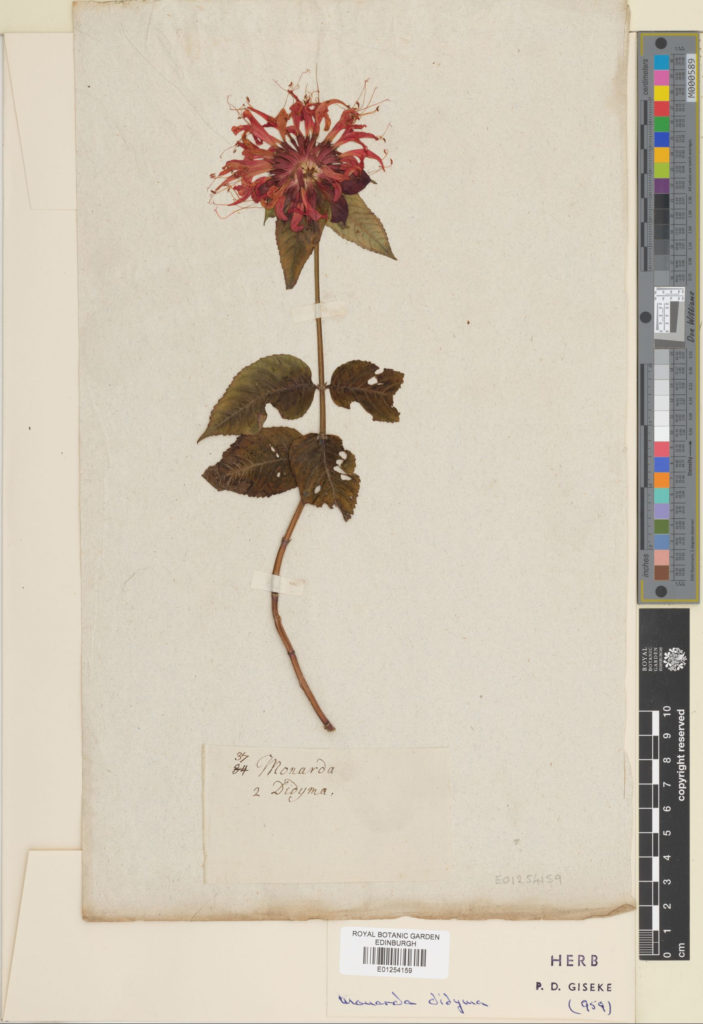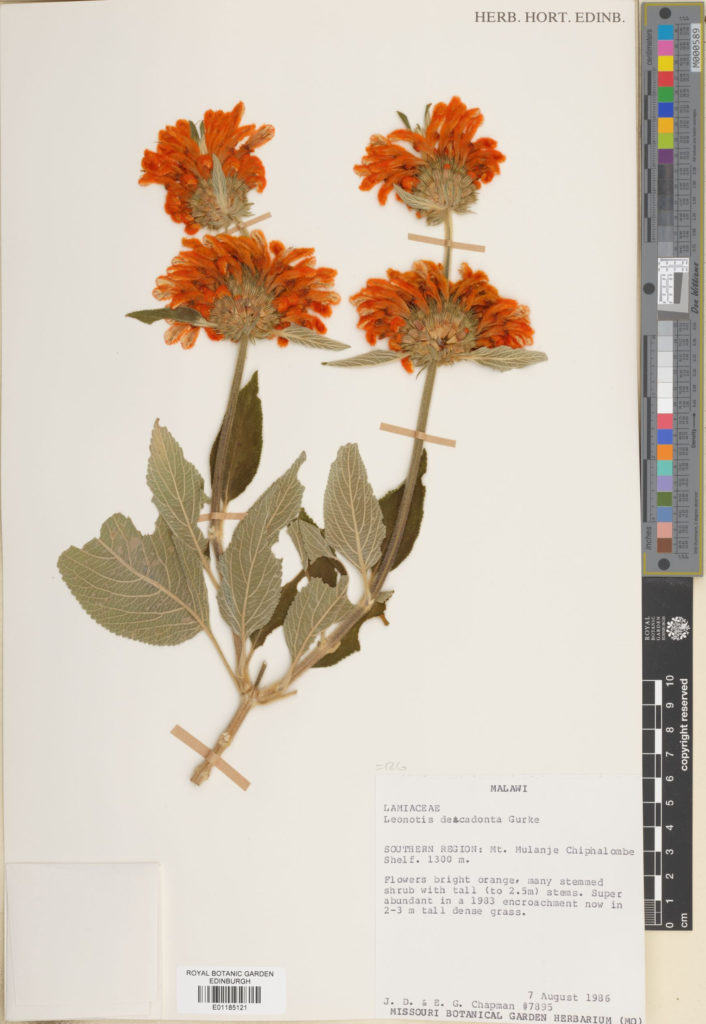The following blog was written by Rebecca Camfield a digitiser in the Herbarium.
Since 2021 we have increased our digitisation capacity with the goal of getting to 1 million specimens imaged by Autumn 2024. Each digitiser is assigned a family of plants to work through. This series of blogs will spotlight the families that have been completed by a member of the team.
The mint family is one of the larger families with 236 genera and over 7000 species. This large family contains most of our culinary herbs such as rosemary (Rosmarinus), thyme (Thymus), mint (Mentha), oregano (Origanum), savory (Satureja), basil (Ocimum), lemon balm (Melissa), shiso (Perilla) and sage (Salvia). It is also home to Chia (Salvia hispanica) made from the seeds, Chinese artichoke (Stacys affinis) and the Kaffir potato (Coleus esculentus), both forms of edible tuber.
There are also medicinal herbs such as lavender (Lavandula), catnip (Nepeta), Patchouli (Pogostemon), wild dagga (Leonotis), Ironwort (Sideritis), heal-all (Prunella) and bergamot (Monarda).
Many are also grown as ornamental plants in our gardens along with Phlomis, Plectranthus, Coleus, Scutellaria, and Callicarpa (beauty berry), as well as Ajuga and Teucrium (the germanders).
Surprisingly it is not just a family of herbs and shrubs but also contains trees, in the form of teak (Tectona), Vitex (Chaste tree) and Clerodendrum to name a few. The latter is a small tree that produces iridescent blue fruit nestled in bright pink sepals.

It is also known as the dead or false nettle family due to species in Lamia and Stachys mimicking nettle plants but without the sting. The name labiate refers to the flowers usually having the petals fused to form an upper and lower lip. Another common trait is square stems.

Our Collections
The Lamiaceae are one of our larger families with 62,564 herbarium specimens over 125 cupboards (including our British and Irish collections). Of these 18 cupboards are for one genus alone – Salvia. We currently hold1602 type specimens.
Before mass digitisation only 13,213 specimens were available online, so the project has added 49,351 records.
The specimens of Lamiaceae can be viewed here.
Top 5 Genera
| No. of Specimens | Genus |
| 6,977 | Salvia |
| 3,997 | Stachys |
| 3,513 | Teucrium |
| 3,022 | Mentha |
| 2,675 | Nepeta |
Unsurprisingly Salvia has the most specimens and there is then quite a gap between 1st and 2nd largest genera. Yet this is not too surprising with Salvia having approx. 1000 species worldwide, whereas Stachys and Teucrium have about 300-400.

Top 5 Regions
| No. of Specimens | Herbarium Filing Region |
| 13,327 | West Asia & Egypt |
| 11,197 | Europe excl. Britain and Ireland |
| 5,474 | Inner China, Korea & Taiwan |
| 5,047 | India, Bangladesh & Pakistan |
| 4,274 | Britain & Ireland |
Lamiaceae is a global family, but is more diverse in the Northern hemisphere which is reflected in our collections. It could be worth enhancing our North American collections (we have just over 2900) as they are heavily from 1880s to 1930s with not many recent additions. The same could be said of Russia and Mongolia (with only 900 specimens).
Interesting notes
The family has 173 Giseke herbarium specimens, some of which have pre-Linnean names and look like they are from older collections, yet have little data such as this Satureja spinosa L.

This Giseke specimen of Monarda didyma L. has done well to retain its colour since it was collected in the late 1700s.

Leonotis might just one of the oddest genera with extremely fluffy flowers, demonstrated here by Leonotis decadonta Gürke

